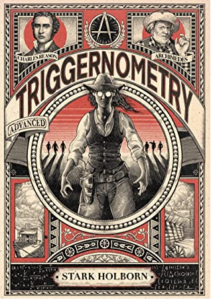I’m glad that Leo de Hartog did not title this biography A Life of Genghis Khan because there is astonishingly little life between its covers. I would have thought the biography of someone who rose from a tribal noble to rule the largest land empire this world has ever known would be positively gripping, but no. Reading along, I first found myself dozing, then skimming, then skipping vast swathes of the book. This is by no means a complete review, because by no means did I read the whole of it. And I’ve even been to Mongolia! Flew in on MIAT’s flagship airplane, no less; it is of course named Chinggis Khan.
The main reason for the staid text can probably be found in the first sentence of the preface: “The study which forms the basis of this book began in 1941 when I was a prisoner of war in Colditz.” Though de Hartog published the book 48 years later, its premises, approach and style are all from a much earlier era. It was probably outdated and was definitely old-fashioned even when it was first published. A quick perusal of the bibliography showed fewer than a dozen sources published within a decade of de Hartog’s book, and far more sources from the 1930s and 1940s.
This biography offers a recitation of facts as dry as the Gobi, with no sense of contending interpretations or controversies and extremely little sense of the personalities involved. De Bartog is also clearly enamored of the Mongol ruler, speaking often of his brilliance, his excellent judgment of character, his wisdom, and so forth. There’s nothing inherently wrong with a biographer having a high opinion of the subject, but even in the few chapters I read, this struck me as jarring and unbalanced.
The maps are stuck in the back, hand drawn, lacking useful detail, and clearly not updated for the 2004 paperback edition. They might as well date back to the time when de Hartog began his studies.
This biography’s greatest virtue is probably its brevity. Less than 200 narrative pages separate the intrepid reader from its ending. After trudging through the first four chapters, which covered Genghis Khan’s early life and rise to ruler of the united Mongol tribes, I dipped back in here and there, and read most of the penultimate chapter, “The Mongol invader in Europe,” because I was especially curious about the encounter with the early Russian principalities. The chapter fit with the rest of the book by draining all zest from an epic collision of peoples. Alas.







